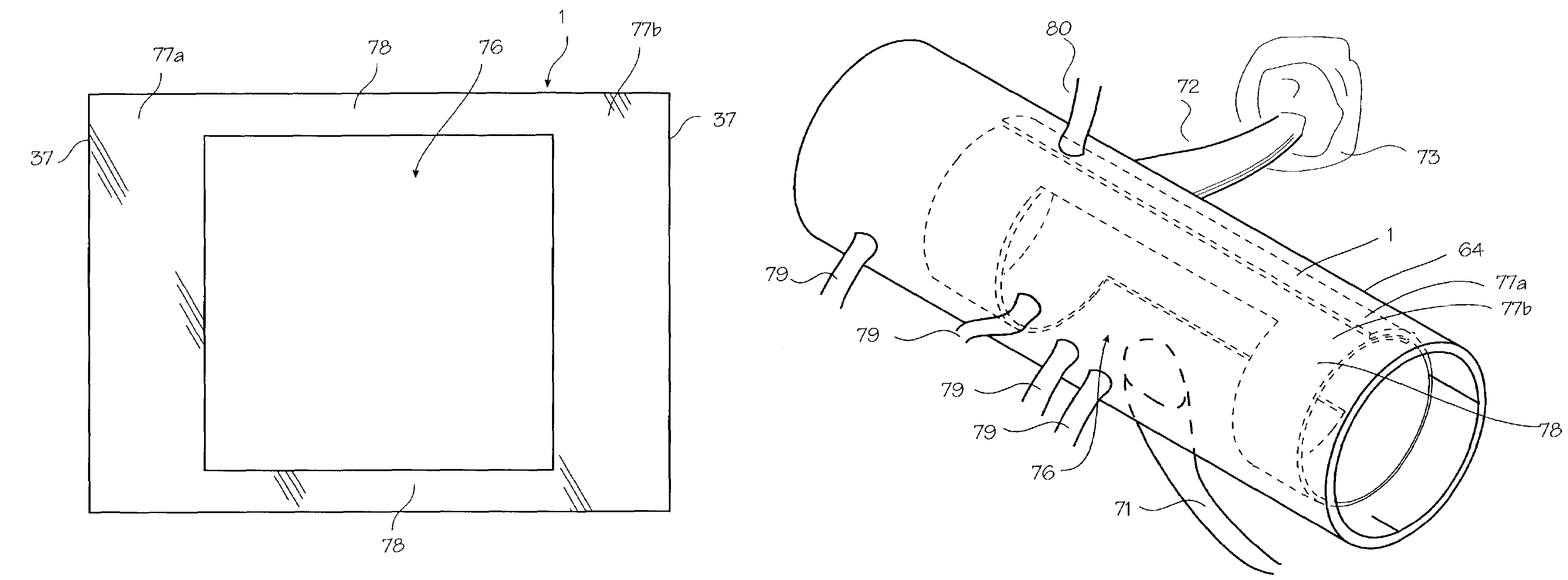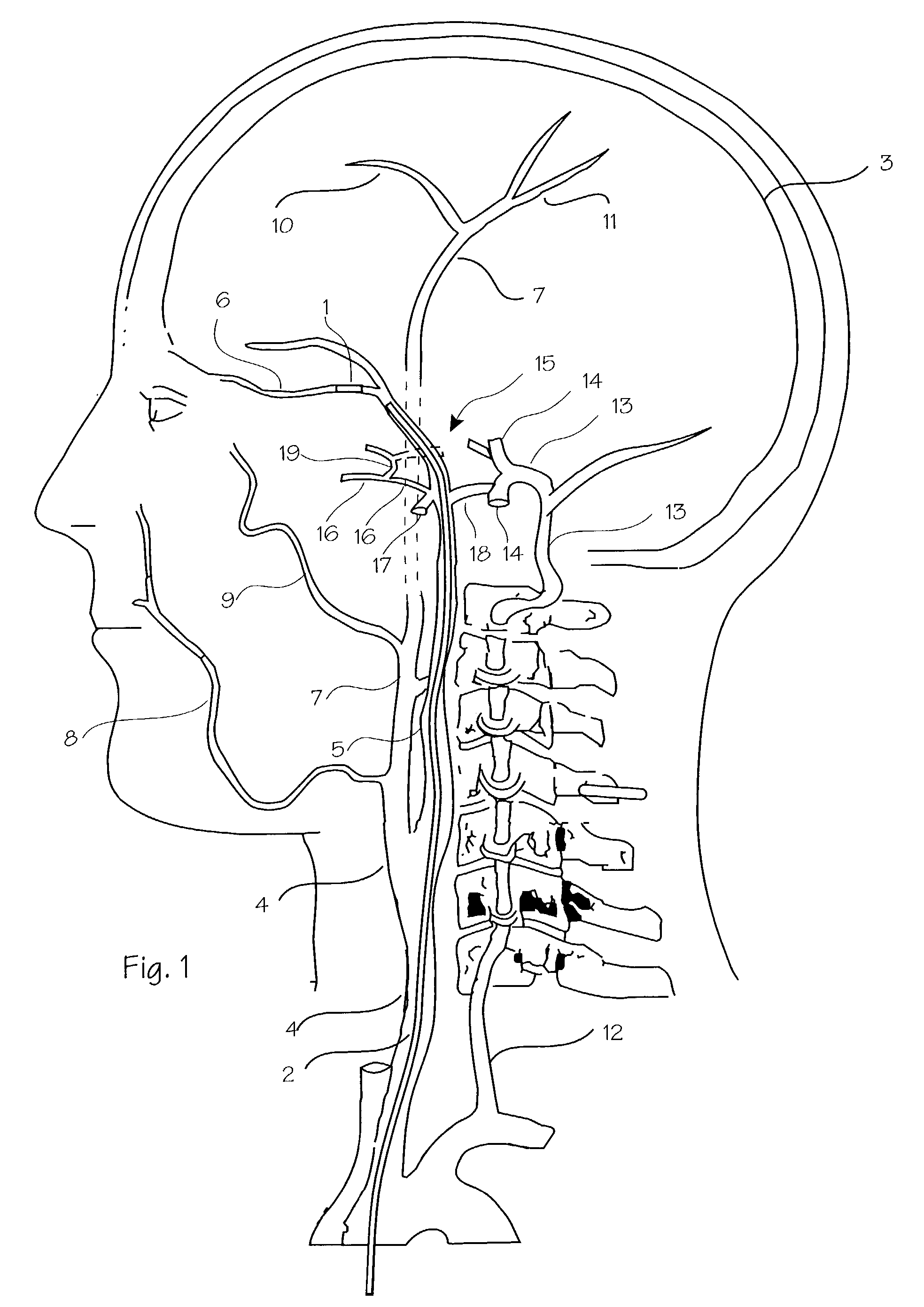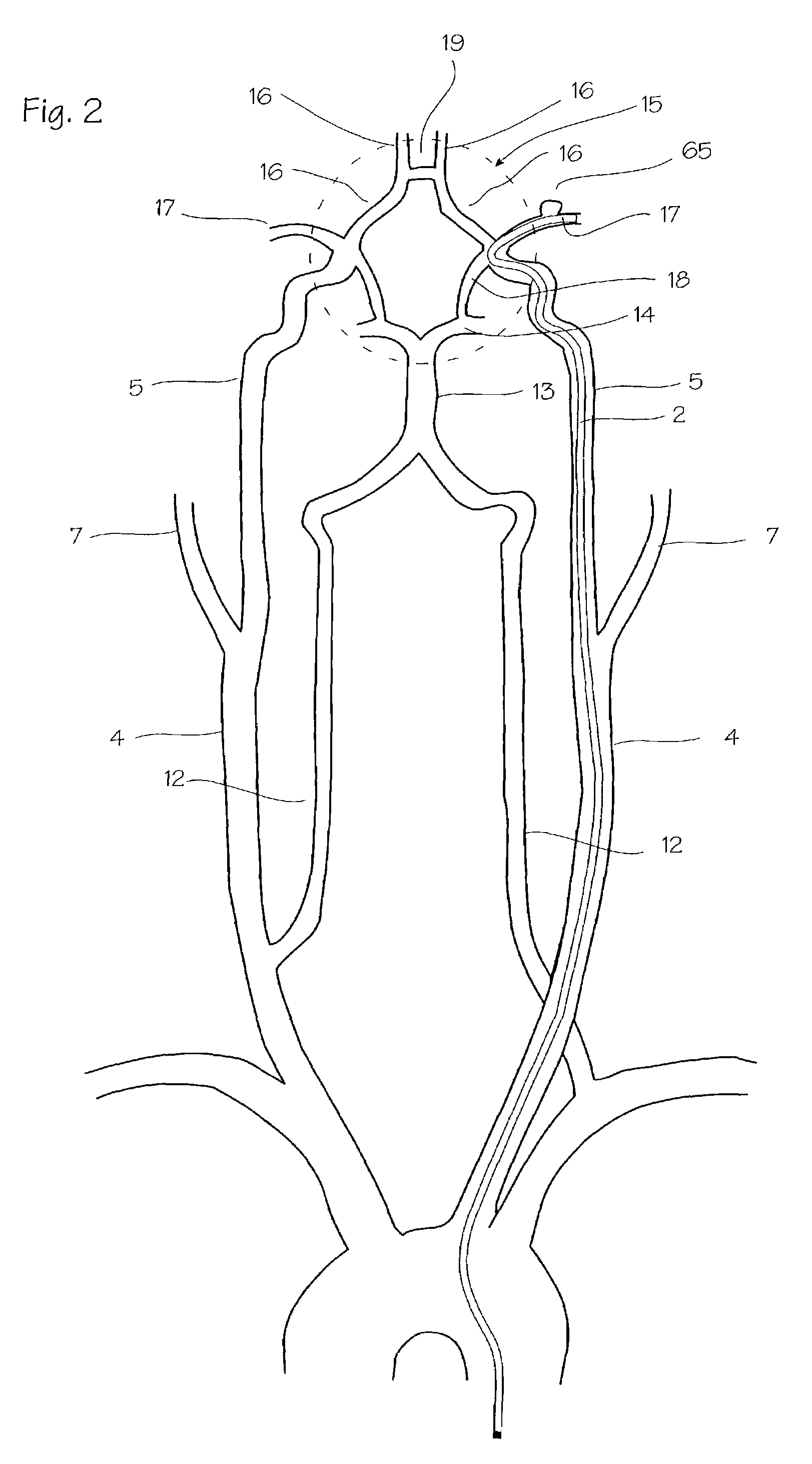Intracranial stent and method of use
a technology of intracranial stent and stent, which is applied in the field of intracranial stent, can solve the problems of unsuitable use in smaller blood vessels, unsuitable for critical vessels in the brain and small diameter vessels, and unsuitable for small blood vessels. , to achieve the effect of non-deformation of radial flexibility, low profile, and convenient insertion and tracking
- Summary
- Abstract
- Description
- Claims
- Application Information
AI Technical Summary
Benefits of technology
Problems solved by technology
Method used
Image
Examples
Embodiment Construction
[0036]FIGS. 1 and 2 show the vasculature of the brain in sufficient detail to understand the invention. The brain 3 is supplied with blood through the carotid and the vertebral arteries on each side of the neck. The important arteries include the common carotid artery 4 in the neck, which will be the most common access pathway for the stent, the internal carotid 5 which supplies the opthalmic artery 6. The external carotid 7 supplies the maxillary artery 8, the middle meningeal artery 9, and the superficial temporal arteries 10 (frontal) and 11 (parietal). The vertebral artery 12 supplies the basilar artery 13 and the cerebral arteries including the posterior cerebral artery 14 and the circle of Willis indicated generally at 15. Also supplied by the internal carotid artery are the anterior cerebral artery 16 and the middle cerebral artery 17, as well as the circle of Willis, including the posterior communicating artery 18 and the anterior communicating artery 19. These arteries typi...
PUM
 Login to View More
Login to View More Abstract
Description
Claims
Application Information
 Login to View More
Login to View More - R&D
- Intellectual Property
- Life Sciences
- Materials
- Tech Scout
- Unparalleled Data Quality
- Higher Quality Content
- 60% Fewer Hallucinations
Browse by: Latest US Patents, China's latest patents, Technical Efficacy Thesaurus, Application Domain, Technology Topic, Popular Technical Reports.
© 2025 PatSnap. All rights reserved.Legal|Privacy policy|Modern Slavery Act Transparency Statement|Sitemap|About US| Contact US: help@patsnap.com



